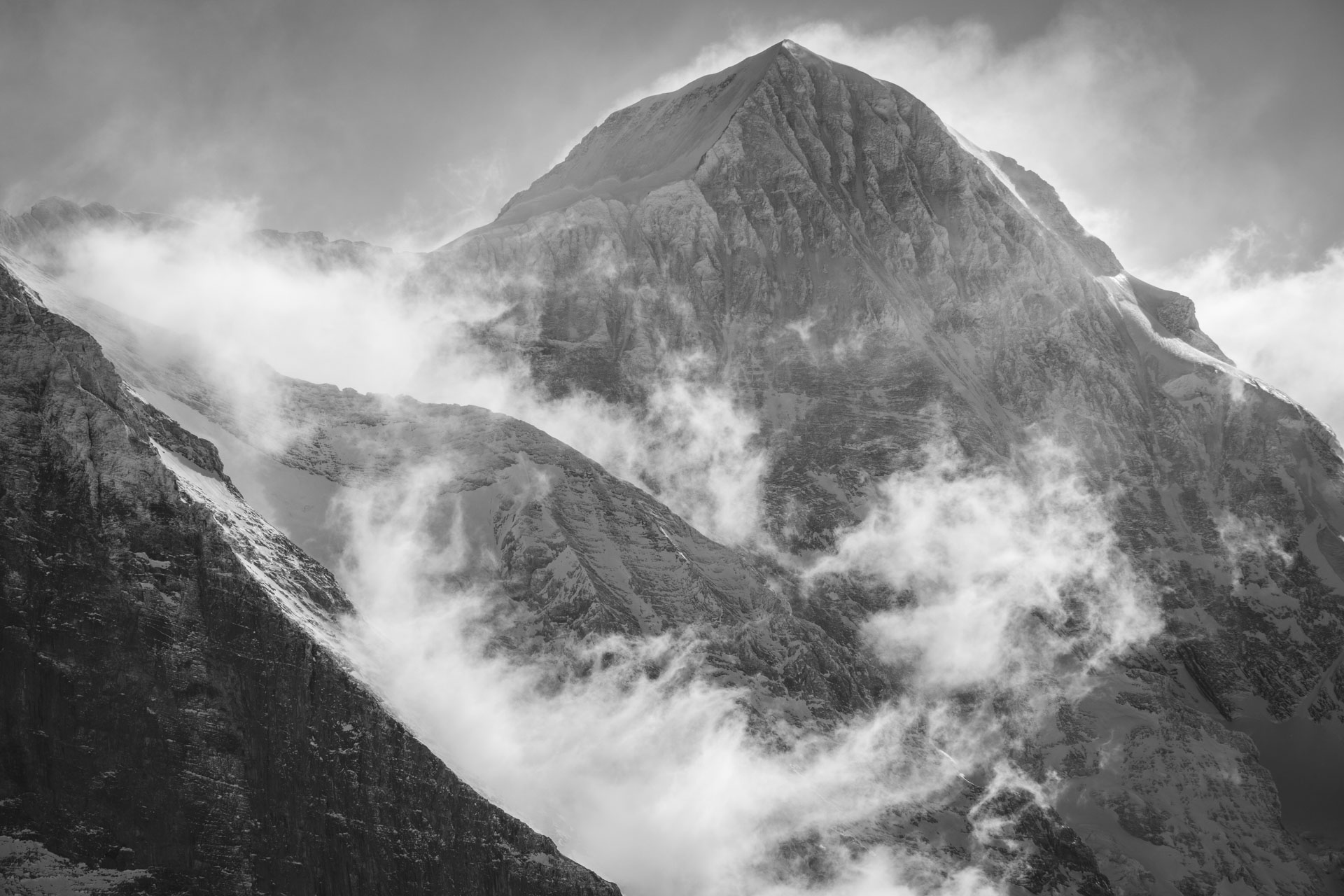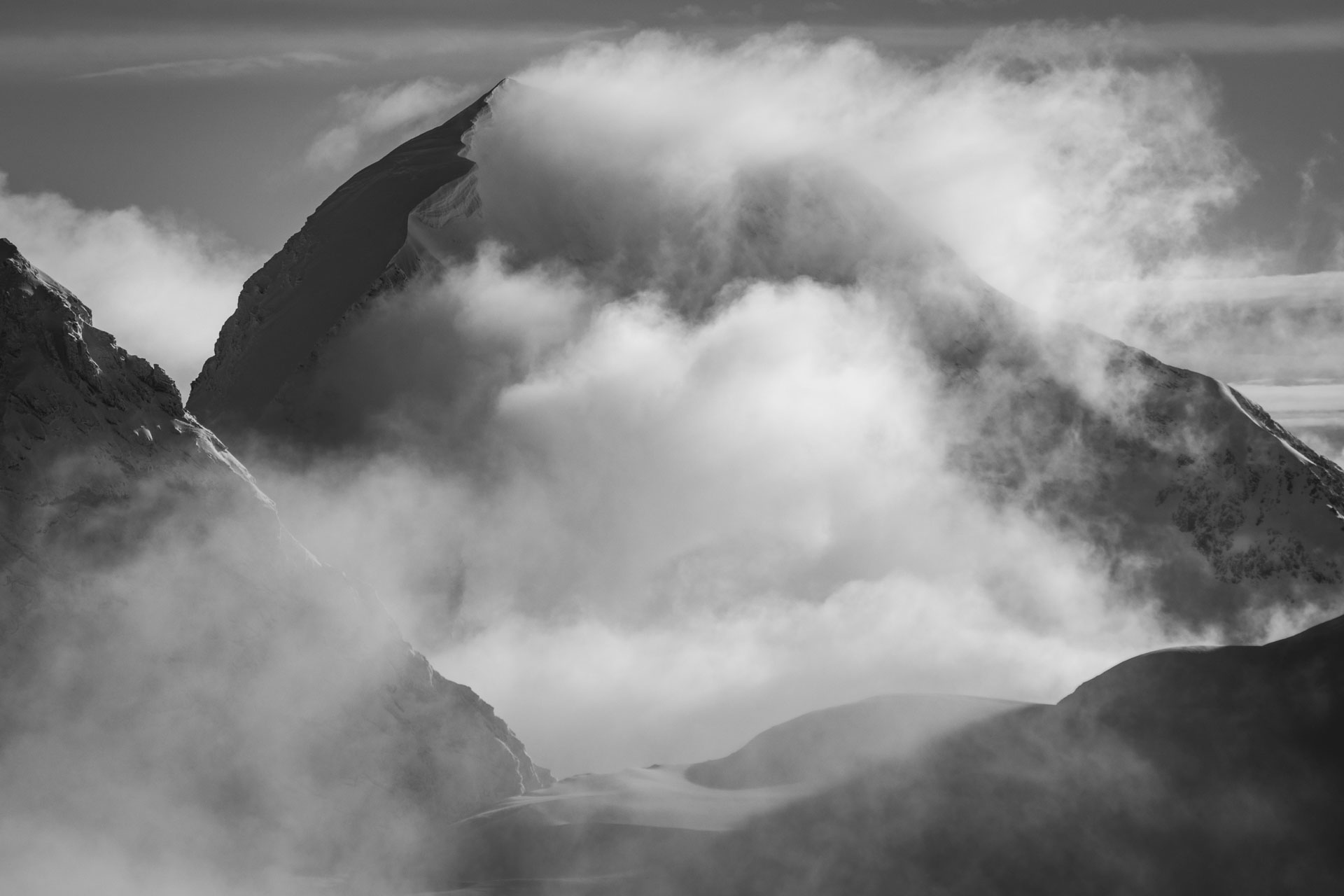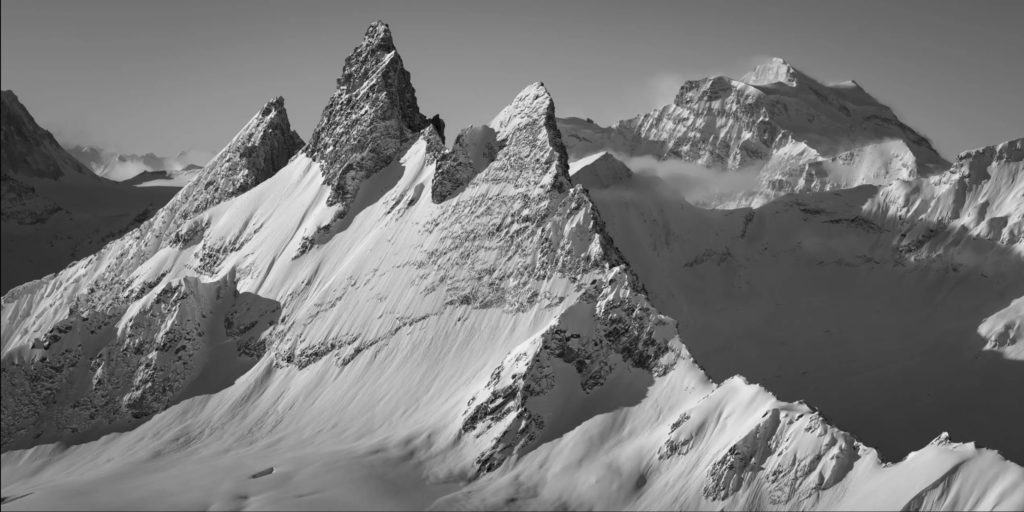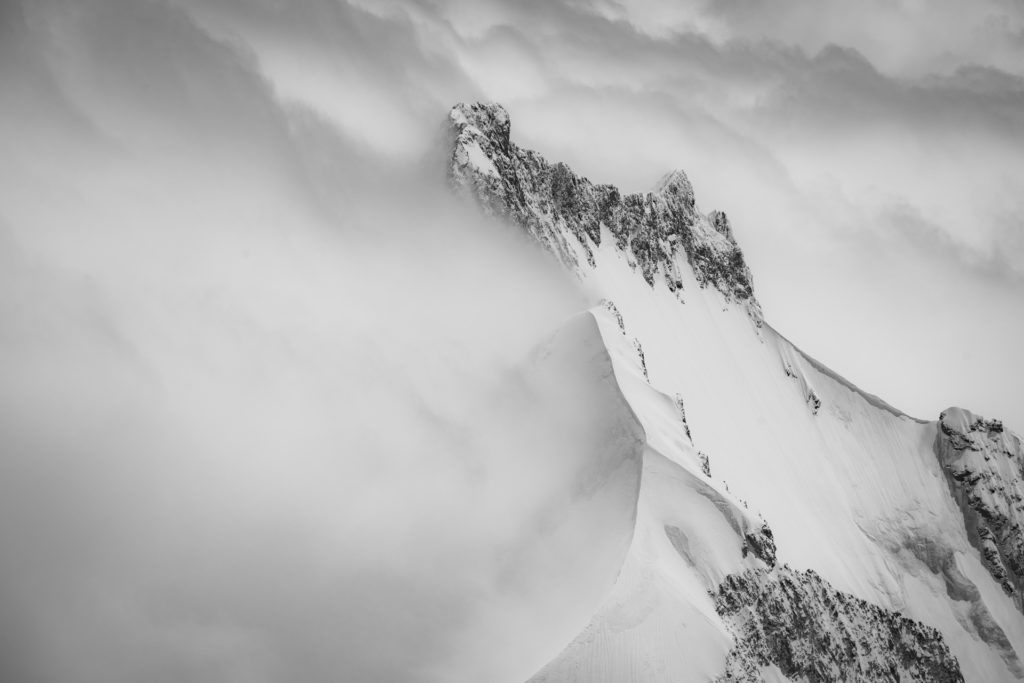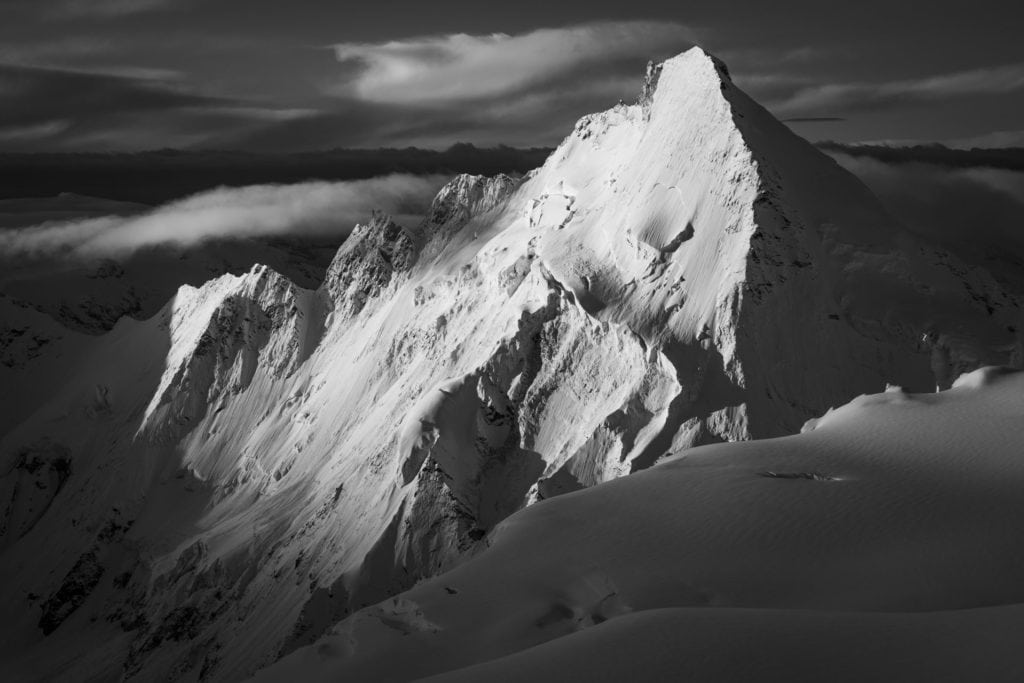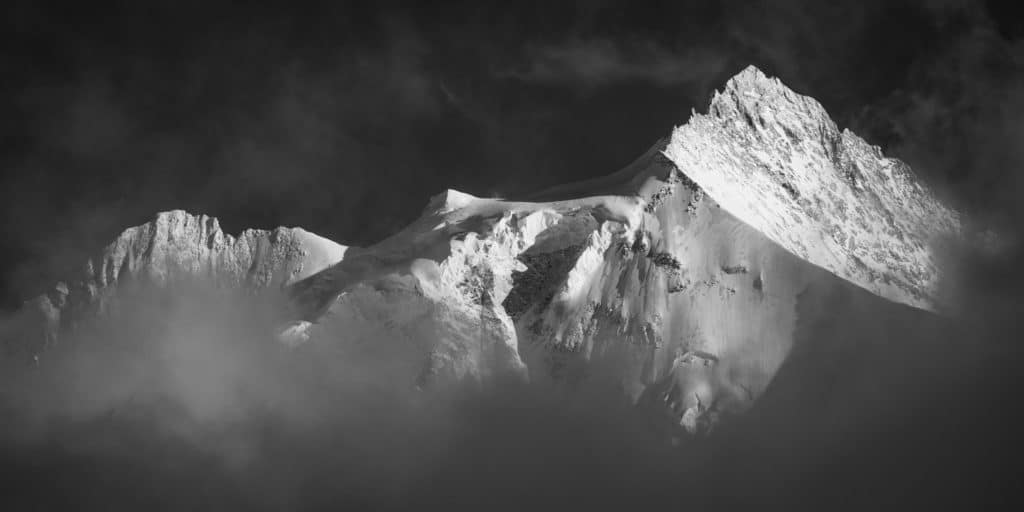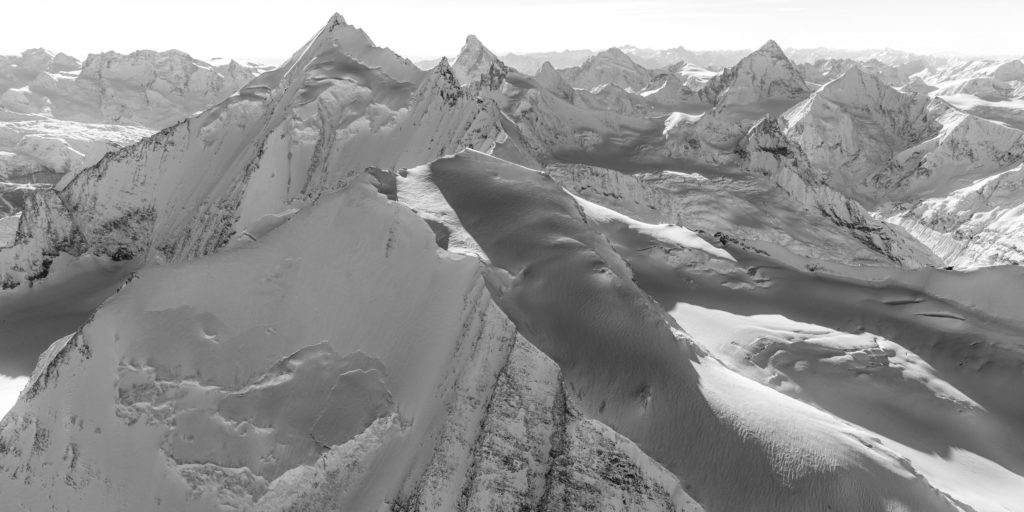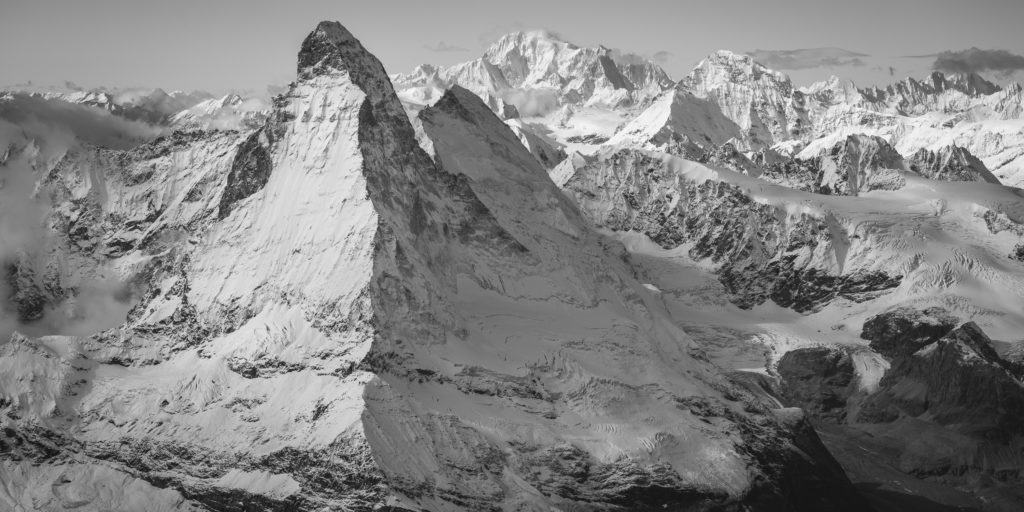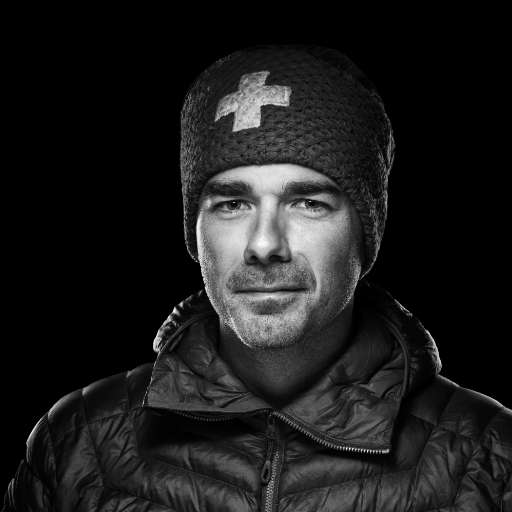The Mönch feeds the imagination of Alpine lovers. In the shadow of its brothers, the mountain rises, unrolls its ridges and points its sparkling summit skywards. Alpinists love to climb it and contemplate the splendours of Grindelwald and the canton of Berne. But do we really know the history of this colossus that rises alongside Jungfrau and the Eiger? Here's a portrait of the Mönch, hero of the bernese alps triptych.
The Mönch: hero of the triptych of the bernese alps
On the borders of the Valais and Bern cantons, the Mönch unfurls its grandiose ridges. An unshakeable bastion of the Aare-Gothard massif, this giant of gneiss peaks at 4110 metres above Grindelwald. Like a lighthouse guiding us across the endless waves, the Mönch displays its glacial walls to the impetuous winds that brave its might. At its foot lie the most famous glaciers: Ischmeer, Ewigschneefäld and Jungfraufirn, which leads to Konkordiaplatz and the Aletsch glacier.
But it's never alone that it defies the sky. Supported by the grandeur of Jungfrau and theEiger, the Mönch is at the heart of a fortress. The legendary triptych of bernese alps, the mountains offer a breathtaking spectacle. The sublime silhouette of rock and ice makes this land an immutable landmark. And whether you're a mountaineer or a seasoned hiker, a lover of heights or of nature, Jungfrau, the Mönch and the Eiger offer you an unforgettable experience at their summits.
The Mönch: a discreet mountain over 4000 metres high
The Mönch lives in the shadow of the Eiger and Jungfrau. A rock lord who, despite the brilliance of his glacial finery, attracts the gaze of no man on earth. For a long time, he wandered without a name or true identity. Eigers Schneeberg or Hinterer Eiger, Kleiner Eiger or Inner Eiger, Weissmönch, Grossen Münch or Gross-Mönch. The summit goes from one name to another like a change of costume.
It was in the 19th century that the mountain was finally christened. The Münchenberg then became the Münch before taking on the definitive title of Mönch. Where did it get its name? No one knows for sure. Could the word Mönch, meaning "monk", have come from the presence of a monastery below? Or does Münch derive from the name of the geldings that summered in the surrounding alpine pastures. The second hypothesis is favored today.
A strange paradox where omnipotence seems to play with the elusive. How can such a magisterial colossus turn into an evanescent wave? A mountain with a thousand names, whose height fluctuates with the seasons. With each measurement, its altitude changes. In 1935, the Mönch stood at an altitude of 4099 metres. Whatever technique scientists use, the result differs from year to year. Today, at an altitude of 4110 metres, the Mönch is one of the summits Alpine peaks over 4000 metres above sea level. More than human error, the variation in the Mönch's level is due to the fluctuating thickness of the snow cap covering its summit.
First ascent of the Mönch: In the golden age of mountaineering
A pyramid of gneiss with discreet shadows, the Mönch managed to attract the gaze of men during the golden age of mountaineering. Who will dare to take it on? Helene Koltsov-Maqsalsky, better known by her pen name Dora d'Istria, recounts climbing the Mönch in 1855 with her guides Peter Bohren, Peter Jaun, Ulrich Laüner and Christian Almer. This feat was recounted in 1856 in La Suisse allemande et l'ascension du Mönch. But her victory was surprising, and doubts crept in. Her account is so confused that it can in no way attest to her ascent. And how could she have come down in such a short space of time? No, something is definitely wrong! Mountaineers John Ball, Leslie Stephen and Gottlieb Samuel Studer raise their voices, revealing the deception to the world. Whether it was a deliberate misunderstanding or the result of bad weather, the roped party had probably gone to summit that day to climb Klein Mönch, not Mönch itself.

It wasn't until August 15, 1857, that man was seen at the summit of the Mönch. Sigmund Porges and his guides Christian Almer, Christian Kaufmann and Ulrich Kaufmann made the first undisputed ascent of the mountain. After bivouacking on the edge of Obers Mönchsjoch, they climb Mönch via its northeast ridge. It was a tough expedition, and a historic feat. And when their feet finally touched summit, the look in their eyes said it all. Their immense pride in having succeeded despite the obstacles and uncertainties. Together, they have surpassed themselves to make their dream come true. All around them, nature offers its finest. The Eiger and Jungfrau of course, but also the Schreckhorn, the Finsteraarhorn and the Aletschhorn. Deeply moved, they are grateful to the Alps for having allowed them to experience such an adventure.
Conquering the Mönch: Opening of the normal route
The Mönch Normal Route was inaugurated in 1863. On July 29, Reginald Somerled MacDonald made the first ascent of its southeast ridge, alongside guides Christian Almer and Melchior Anderegg. Today, the traverse benefits from the presence of the Jungfraubahn, which takes climbers up to the Jungfraujoch, 3454 meters above sea level.
If you'd also like to climb the Mönch by the normal route, you'll need to reach the Mönchsjochhütte. From here, a scree and rock path leads to the snow-covered ridge. To reach summit du Mönch, you'll have to overcome a final obstacle. The ice-covered ridge becomes steeper and tougher. But when you finally succeed, overlooking Grindelwald and the Lauterbrunnen valley, the pain will give way to the joy of being there, in the heart of the Swiss Alps and beyond the world.
The Mönch: Invincible mountain in the bernese alps
The Mönch appears to have succumbed to the human onslaught, but this is not the case. The gigantic, wild mountain still abounds in resources. Clad in ice and snow, it resists and fights for its freedom. But in 1866, a group of hussars achieved a feat. Mountaineer Edmund von Fellenberg decided to climb the Mönch via its northwest ridge. To do so, he had to cross the Nollen glacier. But how could this be achieved at a time when alpine equipment was not yet adapted to ice?

At 28, young geologist Edmund von Fellenberg is a hothead. Fiery and reckless, nothing seems to stop him. Is the Mönch a wall of ice in his face? To counter the obstacle, he takes an 8-meter-long wooden ladder with him. Imagine his guide, Christian Gertsch, dragging such a contraption up the mountain while carving steps into the thick ice! The poor guy couldn't withstand the ordeal. Vomiting and whiter than snow, he collapsed. A few minutes later, he tried his luck again, but this time fell from exhaustion. The Nollen glacier had got the better of him.
But it would take a lot more to discourage Edmund von Fellenberg! On July 13, 1866, accompanied by his guides Peter Egger and Christian Michel, the Bernese mountaineer finally succeeded in conquering the Nollen. He crossed the northwest ridge of the Mönch and raised the Swiss flag at summit at around 3:30 pm. The victory was immense and paved the way for other epics.
At summit on the Mönch: First ascent of its faces
Then it was time to climb the vertiginous walls of the Mönch. Its north face, a wall of ice and rock, was conquered in 1921 by H. Lauper and M. Liniger. In 1934, Mrs Huttan-Rudolf and her guides A. Rubi and P. Inäbnit conquered the north-west face of the Mönch. Austere and implacable, this wall is reputed to be one of the most demanding in the Alps. The mountain's west face is also fraught with danger. Overlooking the Guggigletscher, it requires climbers to have perfect mastery of glacier techniques. And it wasn't until 1982 that it was conquered. In that year, K. Ochsner, P. Apegglen and M. Gruber completed one of the Mönch's most arduous ascents.
The Mönch now welcomes many visitors at summit. Driven by a desire to rub shoulders with the highest peaks in the Swiss Alps, climbers are treading its imposing ridges. The proximity of the Jungfraujoch and the Sphinx only increases their desire to challenge the mountain. From the shadows to the light, the Mönch continues to offer its admirers breathtaking natural beauty.
